Padang Bai Dive Sites Guide
Reef, Muck & Shark Diving in East Bali
Padang Bai Dive sites Map – Diving spots
Padang Bai Dive sites Map – Diving spots
Located on Bali’s east coast, the small port town of Padang Bai offers an incredible diversity of scuba diving experiences, all within a short boat ride from the beach. From easy coral reef dives to shark encounters, macro photography hotspots, and even sand muck diving, Padang Bai is a favorite for both beginners and seasoned underwater explorers.
This area is particularly known for sites like Blue Lagoon, with its clear turquoise water and vibrant reef, Jepun and Jetty for muck and macro lovers; and Baung Penyu for its stunning drop-off and reef wall. Whether you’re on a daily dive trip, an introductory dive, or part of a multi-day dive package, Padang Bai’s calm bay, protected topography, and easy logistics make it one of the most versatile and rewarding dive areas in Bali.
From coral exploration dives to night dives, and from shallow beginners’ reefs to hidden gems for macro photographers, this area truly offers something for every diver — all reachable in just minutes by traditional jukung boat from shore.
Padang Bai is one of Bali’s most diverse and accessible dive areas, offering something for every level of diver — from first-time beginners to macro photographers and certified pros. With most sites just 5 to 15 minutes away by jukung boat, you can explore a wide range of underwater environments in a single day.
Whether you’re looking for bright coral slopes, gentle drop-offs, fish-packed reefs, or unique muck zones, Padang Bai has it all — with calm entry points, protected bays, and a great balance of dive profiles.
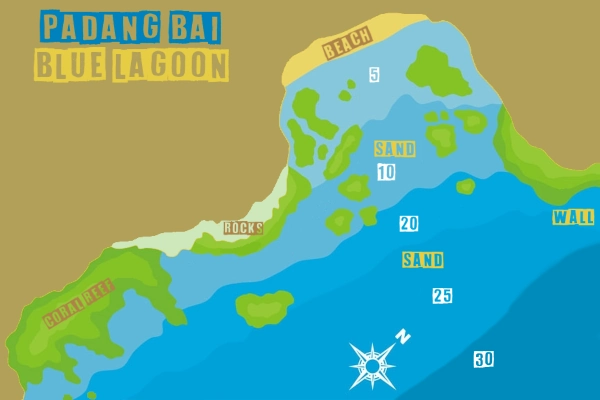
Blue Lagoon is one of the most iconic and beginner-friendly dive sites in Padang Bai — and also a surprising favorite for experienced macro hunters. Just a short 5-minute boat ride from Padang Bai harbor, this small turquoise bay offers easy conditions, rich coral life, and hidden critters for those who know where to look.
We usually begin the dive in the shallow white sand area near the jukung moorings, right in front of Blue Lagoon Beach. This entry point is ideal for back-roll entries, and the gentle slope dotted with coral bommies makes it perfect for all diving levels, including introductory dives and training dives.
From here, there are two common dive routes:
When heading shallower near Silayukti Temple, we reach a vibrant coral plateau with bommies and covered by soft coral, a favorite hangout for green turtles. On some dives, when current or surge becomes stronger, we may adapt the plan and combine Blue Lagoon with the northern Drop Off site, making it a more dynamic route.
Whether you’re starting your diving journey or hunting for rare macro species with an experienced guide, Blue Lagoon offers both comfort and surprises — all in one easy dive.
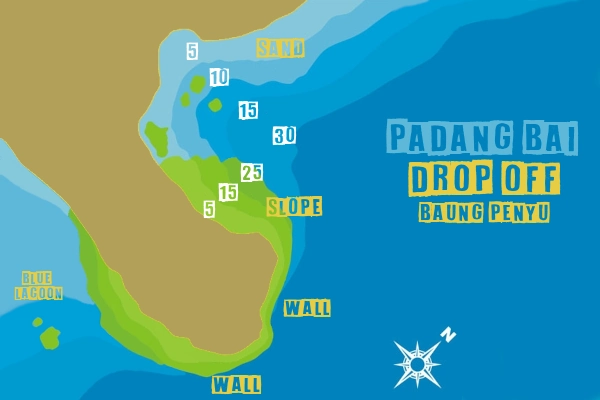
Drop-Off or Baung Penyu — meaning “turtle neck” in Balinese — is a vibrant and colorful dive site located just adjacent to Blue Lagoon. It’s well-known for its gentle sandy slope that transforms into a beautiful coral-covered wall, offering a mix of macro critters, coral life, and occasional larger marine encounters.
We usually start the dive on the northern side, exploring the sandy and soft coral seabed rich with alcyonarians, cleaning stations, anemones, and hidden critters. Early in the dive, macro lovers can spend time scanning the sandy patches for seahorses, shrimp species, nudibranchs and tiny reef creatures.
As the dive continues, the slope gradually steepens, leading toward the drop-off wall. Here, you’ll find brilliant feather stars in every color imaginable, sponges, hard corals, and plenty of sheltering fish life like frogfish, leaf scorpionfish, and moray eels tucked into cracks along the wall. In some deeper crevices (around 20 to 27 meters), catsharks have even been spotted resting. Don’t forget to look into the blue, you might see school of big mouth mackerel, small tunas or a surprise.
When a light current is present, it may help divers glide quickly from the sandy bottom toward the wall section, and if air and time allow, we often finish the dive by drifting gently back into Blue Lagoon bay, making for a beautiful, easy finish.
Baung Penyu is an excellent dive for both macro photography enthusiasts and divers seeking a colorful reef experience — all in calm, accessible conditions.
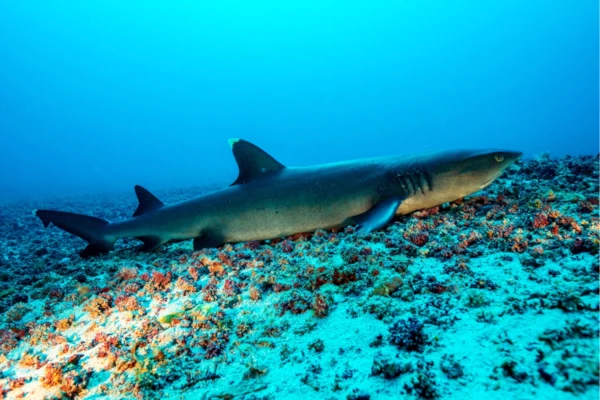
Silayukti and Tanjung Sari are named after the temples perched above the coastline, overlooking one of Padang Bai’s most exciting dive areas. Also commonly called Shark Point, this wide underwater plateau is best known for its white tip reef shark encounters and rich marine life scattered among vibrant coral bommies.
We usually start the dive at the southern edge of Blue Lagoon bay, near the rocky point beneath Silayukti Temple. The beginning of the dive reveals a beautiful coral garden with colorful bommies and soft coral growth. However, as we venture further, the corals thin out, reflecting the stronger currents that often flow across this open underwater plateau.
Here, isolated coral bommies become important shelters. Divers can spot white tip reef sharks resting in the sand patches around these structures, facing into the current to breathe more efficiently. Carefully approaching these bommies can reveal multiple resting sharks, often within close view.
Beyond the shark encounters, this expansive site also offers surprises like eagle rays, large green turtles cruising through, and macro gems such as nudibranchs, octopuses, and moray eels hiding among the coral formations.
Currents can vary:
We usually complete the dive with a safety stop over the shallow coral plateau or gently drift back into Blue Lagoon bay, depending on conditions.
Silayukti / Tanjung Sari is a dive full of excitement — whether you’re looking for sharks, schooling fish, or rich coral life — and it’s a must for divers wanting a taste of adventure diving in Padang Bai.
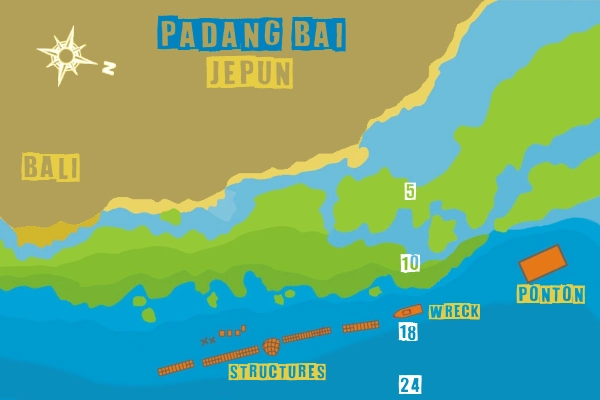
Located at the far western end of Amuk Bay, Jepun is a versatile and easy-going dive site, popular for both snorkeling and scuba diving. Just a 15-minute ride by traditional jukung from Padang Bai harbor, this site offers relaxed diving conditions perfect for all levels — from beginners to experienced macro enthusiasts.
The dive begins in the shallow sandy area near the popular snorkeling spot, where a light slope gently leads divers down to a maximum depth of around 18-20 meters. The bottom is primarily composed of sand and rubble, ideal for spotting hidden critters.
Heading south, divers will follow a line of artificial structures, including a notable old fiberglass wreck now encrusted with corals and completely inhabited by glassfish, frogfish, moray eels, and occasionally stonefish hiding nearby. These structures provide a constantly changing scenery, teeming with small marine life perfect for macro observation.
While the coral coverage is not extensive compared to other Padang Bai dive sites, Jepun is rich in crustaceans, mantis shrimps, and macro surprises tucked around the structures and soft sandy bottom. Towards the southern end of the dive, if currents allow, divers can explore areas with baby white tip reef sharks resting near coral patches and find cuttlefish hovering above the acropora colonies.
Currents at Jepun are usually mild to non-existent, but a light drift is occasionally possible, helping divers gently glide across the site.
Because of its protected location, Jepun is often chosen when sea conditions are rough elsewhere — making it a reliable and enjoyable dive site in nearly all weather.
Whether you’re a new diver, a photography enthusiast, or simply looking for an easy, relaxed dive with interesting life, Jepun is a charming underwater playground.
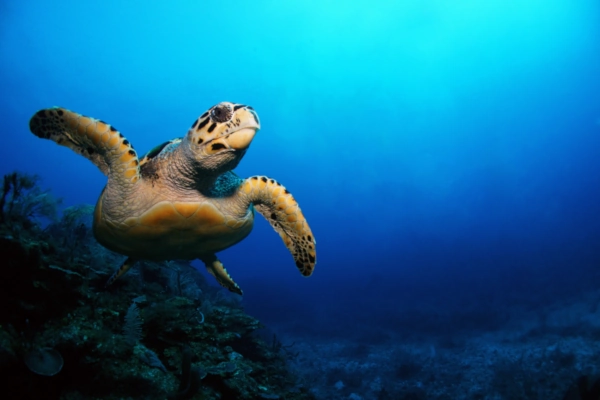
Bias Tugal, known to divers as White Sand Beach, sits across the Padang Bai ferry channel, offering a beautiful and versatile dive experience. This site is famous for its bright sandy beach on the shore, a large plateau with soft coral gardens, and a great mix of macro life and easy conditions — depending on the day.
The dive begins on a flat plateau at 6 to 10 meters, carpeted with soft corals like mushroom leather coral and scattered bommies. This shallow area is ideal for beginner divers, discovery dives, and makes for a perfect, relaxed safety stop for experienced divers.
Descending further, the site becomes a sandy and rubble slope, sprinkled with small coral formations. Macro enthusiasts will love this deeper area, where nudibranchs, crustaceans, and tiny critters hide among the rubble and soft corals. Around 28 meters deep, the slope reaches a small step, dropping gently to 30 meters and beyond.
On the deeper section, careful inspection of large seafans often rewards divers with sightings of pygmy seahorses, while barrel sponges are excellent hiding places for hairy squat lobsters and other elusive macro treasures.
The shallower plateau also attracts larger marine life, including green turtles, schools of razor fish, and colorful reef fish — making the whole dive a pleasant mix of macro hunting and relaxed reef exploration.
Currents can influence the dive plan:
Thanks to its diversity, Bias Tugal is a favorite choice whether you are a beginner, a macro photographer, or an experienced diver seeking an easy but rewarding dive site on Bali’s east coast.
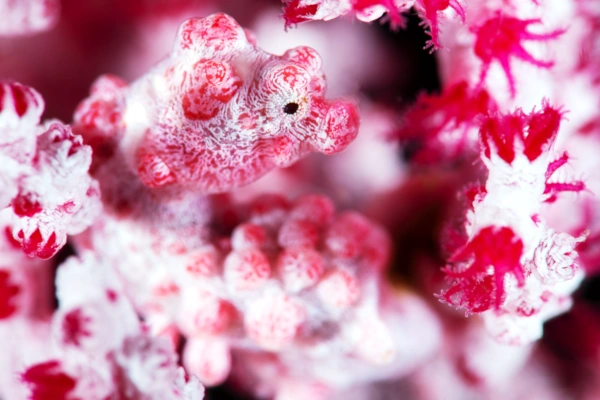
Channel is one of Padang Bai’s most exciting but least visited dive sites — a hidden gem reserved for experienced divers due to its unique location near the ferry traffic lanes. When conditions are right, Channel offers some of the richest marine life encounters and dynamic underwater topography in the entire bay.
We begin the dive near the deeper slope around 30 meters, where the bottom is cut with cracks and crevices — favorite hiding spots for giant lobsters and moray eels. Although the seabed descends to around 34 meters, we prefer to stay closer to 25-30 meters where colorful reef life and macro treasures are more abundant.
Throughout the dive, we slowly move northward along the slope, carefully inspecting cleaning stations for larger reef fish and checking the seafans for pygmy seahorses. Macro lovers will also find big ceratosoma nudibranchs in striking color variations, along with shrimp species and occasional sightings of ghost pipefish.
The dive gradually shallows onto a plateau, where marine life becomes even denser — schools of reef fish, turtles, and sometimes even reef sharks patrol the area. With good conditions, we often drift naturally toward the Silayukti (Shark Point) area to finish the dive smoothly.
Because of its proximity to the ferry harbor:
Channel can also deliver big pelagic surprises, including sightings of giant trevally, eagle rays, and even Mola Mola during the right season (July–October).
For adventurous divers with a taste for untouched reef scenes, giant critters, and macro beauty, Channel is one of Padang Bai’s most rewarding challenges.
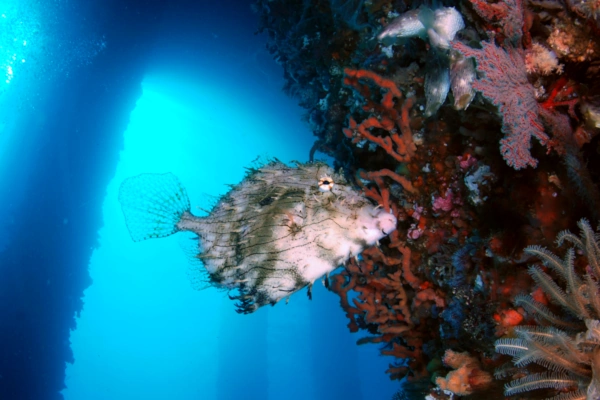
Situated about 20–25 minutes by traditional jukung boat from Padang Bai harbor, Jetty is a macro diving paradise and a must-do for any underwater photographer visiting Bali. Originally built around 2009 as a 300-meter-long ferry pier for large vessels, the structure was never officially used due to not meeting operational standards.
Since then, Jetty has been naturally reclaimed by marine life, transforming into one of the richest muck diving sites in the Amuk Bay area.
The dive typically starts beneath the massive concrete pillars, which have been rapidly colonized by colorful sponges, soft corals, tunicates, and macro critters. Every inch hides life:
You’ll encounter frogfish (including giant and painted species), ghost pipefish, rhinopias, nudibranchs of countless varieties, leaf scorpionfish, octopuses (even mimic octopus and blue-ringed octopus when lucky), and much more.
Beyond the pillars, divers often explore the left side at the end of the jetty, where hidden critters — such as seahorses, mantis shrimps, decorator crabs, rhynopias and syngnathe pipefish — are waiting for those with sharp eyes and patience.
Conditions at Jetty can be variable:
Today, Jetty still offers world-class macro dives, although sightings tend to be more seasonal than a few years ago — with peak critter concentrations often depending on local currents, temperatures, and seasonality.
From dense schools of mackerels and sardines swirling around the pillars to exquisite macro life tucked into every crevice, Jetty remains a magical site, especially for those passionate about critter hunting and macro photography.
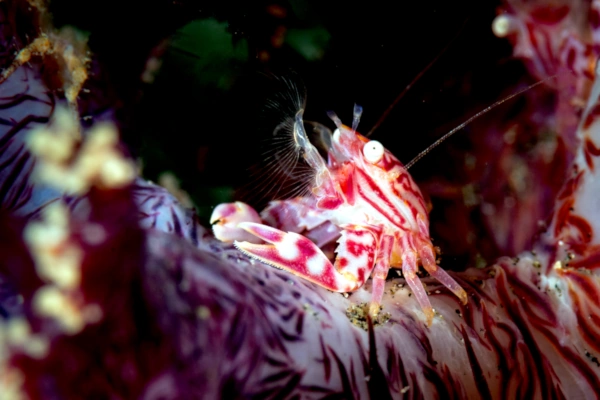
Goa dive site was a hidden gem of Padang Bai, located between Baung Penyu (Drop Off) and Jepun dive sites.
While historically known as a macro dive spot for expert critter hunters, Goa has evolved into something even more special thanks to the Livingseas Coral Restoration Project, which introduced artificial reef structures and boosted marine biodiversity.
The dive starts over a sandy and rubble slope that gently descends from 5 to 23 meters, scattered with small coral patches and hiding places perfect for macro photography. Nudibranchs, pipefish, shrimp species, and small frogfish can be spotted by sharp-eyed divers.
Today, as you explore into the site, you’ll come across artificial reefs, metal frames, and statues that are now colonized with acropora staghorn, and reef fish. Our guides love to inspect the deeper area, checking for crabs on soft coral alcyonacea (candy crab).
This new coral garden attracts juvenile fish, octopuses, cuttlefish, and moray eels, creating a dynamic and colorful underwater scene.
The presence of the coral restoration area means Goa is no longer only for macro experts — it now offers a rich and evolving underwater ecosystem that’s great for all levels of divers interested seeing coral restauration project and techniques.
Conditions are generally calm, although some mild surge may be felt closer to the shallow areas depending on the tides.
Whether you’re passionate about critter hunting, coral conservation, or simply seeking a beautiful, evolving reef, Goa is a wonderful and surprising dive option near Padang Bai.
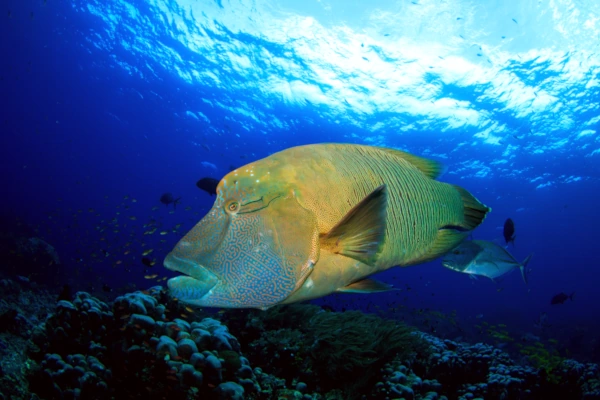
Located just south of Bias Tugal (White Sand Beach), Pasir Hitam — meaning “Black Sand” in Indonesian — is one of Padang Bai’s wildest and least crowded dive sites.
It’s a hidden treasure for macro lovers and a prime spot for spotting large pelagic species when the conditions are right.
Access to Pasir Hitam depends on current direction:
We typically start near black sand beach or just left of a beachfront villa. The dive begins by carefully exploring the black sand and pebble bottom for skeleton shrimp, tiny nudibranchs, mimic octopuses, and other hidden critters.
As we drift further out, the landscape shifts:
On the deeper section (up to 30+ meters), this dive site shows its other face:
The final part of the dive usually ends naturally in the Bias Tugal bay, where a safe and calm ascent can be performed over the bright sandy plateau.
⚡ Pasir Hitam is known for its strong seasonal surprises:
Some days it’s a peaceful macro wonderland; other days, strong surge and swirling currents (nicknamed “washing machine” conditions by local divers) may bring incredible pelagic sightings — but require advanced diver experience and excellent control.
If you seek a dive site that combines macro diversity, thrilling big-fish encounters, and the adventure of a little-known spot, Pasir Hitam is not to be missed.
At Bali Aqua Dive Center, we offer daily dive trips to explore the stunning dive sites of Padang Bai and Amuk Bay. Whether you are a beginner, a macro photographer, or an experienced diver seeking thrilling drifts, we tailor the experience to your needs — ensuring comfort, safety, and adventure.
Smooth, safe, and personalized — diving Padang Bai with Bali Aqua is hassle-free from start to finish!
Want to go even further? Our Best of Bali (BOB) and full board Dive Bali Safari programs include Padang Bai as a highlight, along with other world-class destinations like Nusa Penida, Tulamben, and Menjangan.
Padang Bai offers diverse diving conditions suitable for both beginners and experienced divers. Each dive site has its own personality, and the conditions can vary depending on tides and seasons. Here’s what you can expect when diving with Bali Aqua in this beautiful bay:
Discover the perfect mix of relaxing reefs, thrilling drift dives, and amazing macro life with Bali Aqua Dive Center!
Whether you’re a beginner or an experienced diver, Padang Bai offers unforgettable underwater adventures for everyone.
Our friendly team will customize your dives based on your level, preferences, and Bali’s best conditions
✅ Small groups
✅ Experienced local guides
✅ Flexible daily dive trips and private packages
✅ Top-quality rental gear available